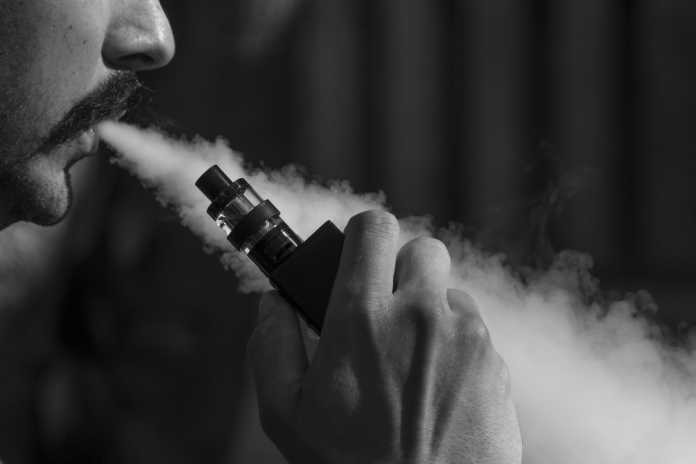Vaping has widely been marketed as a cigarette-cessation aid since the invention of the modern vaporizer by Chinese pharmacist Hon Lik in 2003. Lik’s key motivation behind inventing the modern e-cig was the need for a device that could act as a safer, healthier, and even cheaper alternative to traditional nicotine delivery systems. Lik was further motivated by the fact that he had lost his father to smoking-related lung cancer and that he was a chain smoker himself.
Over time, however, dry herb vape vaping has transitioned from merely being a cigarette-cessation aid. Many vapers today view the concept as more of a lifestyle. So, a significant proportion of the global vaping community doesn’t necessarily comprise people with a history of cigarette smoking, which explains the sustained rise in the vaping culture around the world.
In this post, we’ll highlight all the reasons behind the consistent growth of the vaping industry.
Vaping Is Healthier Than Cigarette Smoking
Vaping offers numerous health benefits compared to traditional cigarette smoking. And while they both come with higher bioavailability, vaping presents less harmful long-term side effects than smoking.
All you need to do is invest in high-quality vape accessories by vape4ever.com or other reputable suppliers.
In the same breath, it’s worth noting that vaping isn’t 100% risk-free. On the contrary, e-juice vapor also presents a host of short-term and long-term side effects, ranging from throat irritation to lung disease. There are even fire incidents linked to the mishandling of vape batteries. However, the risks of vaping are way less severe compared to those posed by cigarette smoking.
Vaping Is Safer Than Cigarette Smoking
We’ve just mentioned accidental fires as one of the common risks associated with vaping. However, there are fewer fire incidents linked to vaping than smoking. That’s primarily because vaping doesn’t involve combustion. Therefore, there’s no flame produced.
You’d need to be overly careless with your vape batteries for them to spark a fire. Provided that you store the batteries safe while not in use, there are virtually no other risks of vape-related fires.
So, this is another area where vaping scores higher than cigarette smoking and a possible reason behind the increase in the vaping culture.
Vaping Is Cheaper Than Cigarette Smoking
As you shall find, an average e-cig costs higher than one regular cigarette roll. The same applies to a small bottle of e-juice.
So, why is vaping considered cheaper than traditional cigarette smoking?
Well, the answer lies in the long-term implications of both habits.
As we already pointed out, cigarette smoking poses graver health risks than vaping. On a long enough timeline, a smoker may need to be hospitalized for cigarette-related medical issues. The treatment costs, coupled with potential losses in workplace productivity, make smoking more expensive than vaping in the long run.
Vaping Offers More Flexibility
Vaping from litejoy offers flexibility in terms of the e-cig to choose from or the material to vape.
Vaporizers
The vaping market teems with thousands of vaporizers designed for users of different tastes, preferences, and budget needs.
For instance, there are vaporizers classified primarily depending on the design. Examples include cigalikes, vape pens, and vape mods.
E-cigs can also be categorized depending on the material you intend to use them with. In which case, we have liquid cartridges and dry herb vaporizers.
Last but not least, vape devices fall into categories based on their heating mechanism. In this respect, there are conduction vaporizers and convection vaporizers.
Vaping material
Vapers enjoy the freedom to choose the ingredients their vaping material (e-juice, dry herbs, or wax concentrates) contain.
There’s the option of vaping nicotine-based or nicotine-free products. There’s also the freedom to choose the composition of your base liquid. For instance, cloud chasers can opt for e-liquids comprising higher ratios of vegetable glycerin (VG) to propylene glycol (PG), while the converse is true for flavor chasers.
There’s even the flexibility to choose from tons of available flavors or opt for flavorless products.
Smokers don’t enjoy this kind of freedom. That’s because cigarettes typically come with predetermined nicotine levels. Plus, smokers don’t savor the flavors in their cigarettes as much as vapers do.
Vaping Is Popular Among Millennials
Millennials play a crucial role in shaping consumer trends. Interestingly, the concept of vaping has widely caught on among members of this market segment.
According to a nationwide survey commissioned by the American Society of Clinical Oncology, over 20% of young adults consider e-cigs to be harmless and non-addictive than smoking. This perception alone is responsible for the rising number of young people turning to vapes.
Vaping Has Received Tremendous Celebrity Endorsement
There’s a growing list of celebrities that endorse vaping, including Tom Hardy, Katy Perry, Lady Gaga, Leonardo DiCaprio, to mention but a few. These endorsements have also played a significant role in changing attitudes about vaping.
In fact, celebrity endorsements are the primary reason many people now view vaping as a culture. The logic is that if my favorite movie star is a proud vaper, then there are probably many benefits to it.
Some celebrities actually give credible arguments behind switching to vaping. For instance, actress Catherine Zeta-Jones made the transition following her husband, Michael Douglas’, death from smoking-related throat cancer.
There are numerous factors behind the sustained growth of the vaping industry. As a parting shot, remember that vaping isn’t entirely risk-free. So, if you must vape, do so in moderation.
References
- https://www.nhs.uk/news/heart-and-lungs/long-term-vaping-far-safer-than-smoking-says-landmark-study/
- https://www.ucl.ac.uk/news/2019/jun/smokers-who-switch-e-cigarettes-could-save-ps780-year/
- https://www.asco.org/cancer-survey/
- https://www.vampirevape.co.uk/blog/celebrity-vapers-the-stars-who-made-the-switch/
- https://www.pewresearch.org/fact-tank/2019/09/26/vaping-survey-data-roundup/
- https://www.thetrentonline.com/3-major-reasons-for-the-growth-of-the-vaping-industry/
Disclaimer: This article contains sponsored marketing content. It is intended for promotional purposes and should not be considered as an endorsement or recommendation by our website. Readers are encouraged to conduct their own research and exercise their own judgment before making any decisions based on the information provided in this article.







































































